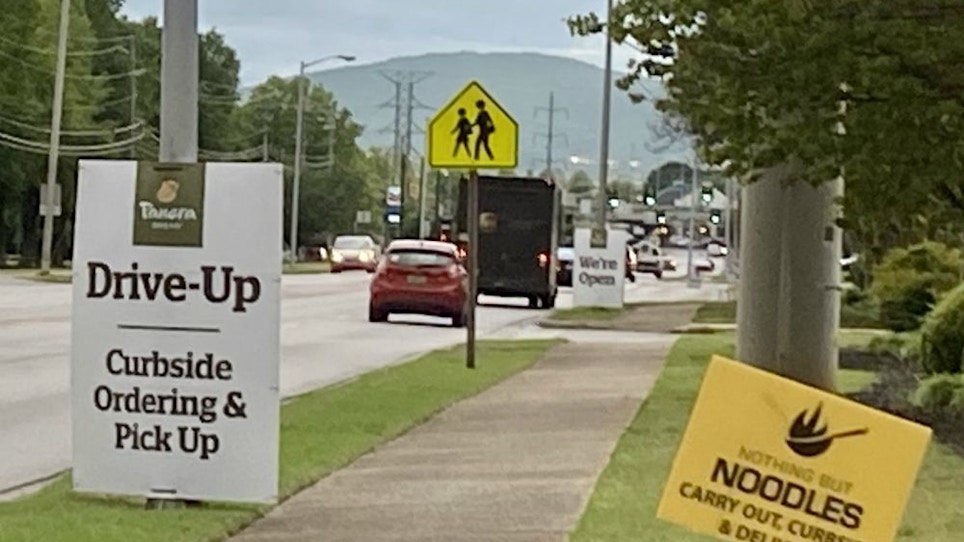With the United States slowly "reopening" amid the COVID-19 pandemic, retailers must continue to inform the public about their status and plans including that you're open for business.
If you're not telling them you're open, in some way, you're missing out on potential sales and word-of-mouth advertising. You don't have to spend five figures or even half that in your local market on advertising. But if you're not doing anything at all that's not smart.
Stores and restaurants are reopening in Alabama where I live. Like other states we've had a variety of regulations and "urgings" from the governor's office and civic officials. Many of our restaurants are staying closed for indoor seating and are continuing to do takeout pickup or curbside pickup. Others are going at 50-percent capacity with social distancing.
One of my local archery shops announced on Facebook it was reopening along with its new hours. It had been closed, part of the "essential, non-essential' order from our state capitol. We have a Cabela's and large, two-store pistol-and-pawn shop that sells tons (literally) of ammunition, guns and goods. Both are easily visible from main roads, with bright colors on the latter and the traditional "cabin" design on the huge Cabela's store.
But I've noticed other signs here and there throughout our city of about 200,000, signs like the one in the main photo. They're on the roads, in front of stores and restaurants, visible and noticeable.
"We're Open!"
"Open, Curbside Pickup!"
"Takeout, Curbside, New Hours!"
Like cactus blooms popping up after a spring shower in the desert, these signs are everywhere. That's smart business.
Signs Get Attention
If your sign blends in too well it will not get the desired attention, so now is not the time to conservative or sticking to your "wood, timber, grass, we're an outdoors store" thought process.
Be garish. Loud. Use bright colors that make someone notice. Think blaze orange and vivid red, maybe yellow on black. Think about how McDonald's iconic red and yellow colors stand out.
Your signs don't have to be gigantic but they also shouldn't be tiny. Find the middle ground if you don't want to go large, or cannot due to any community restrictions. Or, if you have no restrictions, consider a big ol' whopping sign that makes everyone notice.
Have these created professionally by a sign-making shop with big, visible letters. Don't do it yourself with posterboard and a Sharpie unless you're darn good at it. Few people are. Professional work still stands out. If you do your own, get the widest Sharpie possible and use large letters.
Be Obnoxious?
Smartly obnoxious is the way, perhaps.
Think about large red or blaze orange arrows pointing the way to your store. Can't miss those, right?
Better yet, how about a real person standing there with a giant arrow waving and pointing the way? As long as everyone's being safe, standing near a road could be a way to break the monotony of working inside.
Another option is using a fly guy, also known as a sky dancer or inflatable man. Or as some folks call them, "that flappy crazy arm-waving tube thing" that flails about. They're usually 20 or 30 feet tall, bright red and you cannot miss them.
Whenever I'm driving and see one of these inflatable dancers I always look. Why? Because humans are attracted to movement. If you're watching the skies while duck hunting, you notice a speck of movement. If you're fishing in calm waters, you notice baitfish or trout breaking the surface.
We notice movement. Use that to your advantage.
Billboards Still Attract
Near the Cabela's store here in my town is a billboard for one of the local archery stores. When I say near, it's basically right beside the big retailer's giant parking lot. Can't miss it.
The archery store is small and does nothing but sell bows, broadheads and gear along with servicing bows. The owner has decades of experience helping 3D target shooters and hunters. People trust him, and he has a good business. His billboard is a big middle finger to the big box store and it always makes me laugh.
Billboards cost more money of course, but are quite visible. Average monthly price in our area is $800 for a medium sized billboard to $2,500 for a digital billboard. Billboards have history dating to the 1830s, which surprised me. I thought they became prominent after automobiles came about, but they were here long before that.
Billboards get noticed. Remember to opt for bright colors, use a short message so people will remember it, and see it as an investment.
Hit the Airwaves
Years ago one of the sponsors of the Paul Finebaum sports talk radio show got my attention. Craneworks is one of the largest equipment and large crane rental companies, offering cranes from 2 to 500-ton capacity.
I honestly though, "What the hell is a crane rental company doing sponsoring a radio sports talk show?" Finebaum's show reaches millions of listeners. He works for ESPN, does radio and television, and it's easy to see why Craneworks would want to hitch its wagon to Finebaum's train.
Check into advertising on radio and television. You don't have to tie yourself to a dedicated outdoors show, although that clearly would hit a target demographic. But if you want to grow, consider other shows and markets. Political talk shows? Maybe. General sports talk? Sure.
For your television commercials, consider hiring a local talent who can hit the mark, speaks clearly, will not stumble or ramble, and may lend your business credibility with a professional voice and appearance.
We'll take a look later at digital advertising possibilities. Until then, take advantage of these traditional opportunities to let customers know you're open and ready for business.






